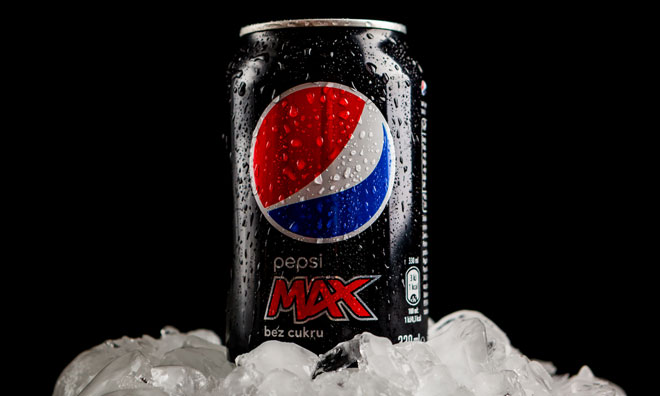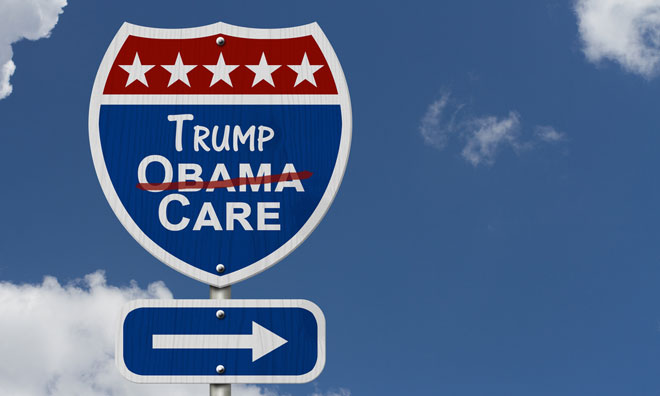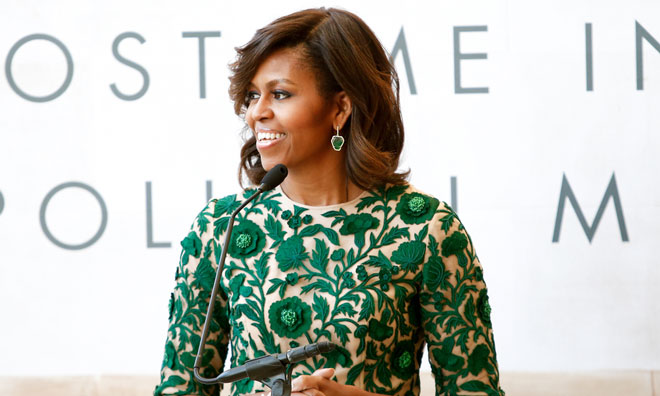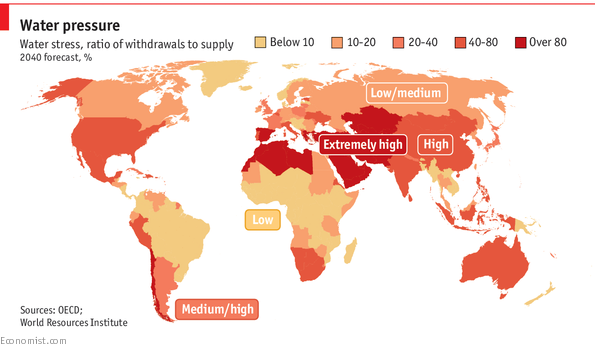What a Trump Presidency might mean for the US food industry
- Like
- Digg
- Del
- Tumblr
- VKontakte
- Buffer
- Love This
- Odnoklassniki
- Meneame
- Blogger
- Amazon
- Yahoo Mail
- Gmail
- AOL
- Newsvine
- HackerNews
- Evernote
- MySpace
- Mail.ru
- Viadeo
- Line
- Comments
- Yummly
- SMS
- Viber
- Telegram
- Subscribe
- Skype
- Facebook Messenger
- Kakao
- LiveJournal
- Yammer
- Edgar
- Fintel
- Mix
- Instapaper
- Copy Link
Posted: 20 January 2017 | Roy Manuell, Digital Editor | 1 comment
Donald Trump’s stance on the food and beverage industry remains to be seen. In this article, we predict what might happen once Trump enters the White House…


Article originally published November 28 2016.
November 9 2016 was a day that shocked the world as reality television star and business tycoon Donald Trump overcame the Democratic candidate Hillary Clinton to become the 45th President of the United States.
During an election that often felt more like a verbal boxing match at times than a discursive argument about policy, Trump defied pollsters and an entire industry of consultants and political scientists to emerge victorious. As the majority of the established socio-economic elite had backed Clinton, the result has been widely described as a move against the establishment and a globalised world but in this article, I will consider the implications the democratically-elected Donald Trump and his administration might have for the food and beverage sector in the ‘land of the free’.
What did Obama achieve?
Under Barack Obama, the US saw a variety of reasonably significant changes to food policy. For example, the interdiction of trans fats in June 2015 made history as the FDA announced it would give the food industry three years to phase out partially hydrogenated oils used in a wide variety of products aimed at reducing the problem of cardiovascular disease. In addition, the US saw the reform of farm subsidies, a mandatory reduction of sodium content in products and a GMO labelling bill that was passed through the Senate earlier this summer, ensuring for the first time in history that food products must carry labels listing genetically-modified ingredients. While criticised as a watered down version of what was initially promised, many industry experts regarded these measures as marking a step towards increasing transparency and improvement of the level of food safety in the States.
Food safety regulation
From a regulatory perspective, President Trump unsurprisingly differs from Obama and seems to advocate a peeling away of legislation and regulation describing the aforementioned reforms by the Obama Presidency as “regulatory burdens”.
“As President, I will work with Congress to reform our regulatory system…”
In a campaign statement, Mr Trump said the following:
“Our nation’s regulatory system is completely broken. Terrible rules are written by unelected, unaccountable bureaucrats who often know nothing about the people they are regulating. The regulators have all of the power, and our nation’s farmers are often forced to endure costly, burdensome, and unwise regulations that are bad for American farmers and consumers.”
Trump’s vocal repudiation of the previous administration’s granting of an enhanced role to the Food and Drug Administration embodied by policies such as the 2015 Food Safety Modernisation Act, serves to suggest a move away from “unjustified regulations.”
“As President, I will work with Congress to reform our regulatory system. We will reduce the power of government bureaucrats… We will increase transparency and accountability in the regulatory process. Rational cost-benefit tests will be used to ensure that any regulation is justified before it is adopted.”
Power to US farmers and agriculture professionals
This anti-regulatory approach might well bring renewed freedom to US agriculture professionals.
Throughout his passionate campaign, Trump locked horns with the Environmental Protection Agency, the agency that regulates pesticide use in food production and the US water supply and subsequently promised to cut EPA regulations on the eve of the election in October by as much as “70 to 80%”. He further plans to slash its budget and “get rid of [EPA] in almost every form.
“We are going to have little titbits left but we are going to take a tremendous amount out.”


This is thought to grant new power and regulatory autonomy to US farmers, consistent with a protectionist, perhaps more generally isolationist approach to the US economy as a whole as indicated by the electoral campaign rhetoric.
In an interview with The Hutchinson News, Ryan Flickner, Senior Director of Public Policy for the Kansas Farm Bureau (KFB) agreed with this prediction in that a Trump administration might give more say to farmers across the United States.
“Trump is surrounding himself with people who know and understand agriculture, which is a good sign. Having Vice President (Mike) Pence running point on ag issues will pay dividends.”
Sustainability
There are concerns from around the world however, that his victory in November will affect more widely the global effort to tackle food security vulnerability and increase sustainable practice in the industry.
“I strongly oppose the extreme, climate alarmism agenda of the Obama-Clinton years. Too often, the Obama-Clinton team imposed billions of dollars in environmental costs on American citizens without achieving real environmental benefits,” Trump lamented on the campaign trail.
Firstly, based upon scientific evidence, sustainable agriculture, on a global as well as national level, requires a stable, predictable climate and plenty of water. With an exponentially-rising world population that will correspondingly require an increasing supply of food that correlates to its growth, this has never been more important. A volatile climate that emphasises the intensity of climate differentiation – in other words making dry places dryer and wet places wetter – drastically reduces both the US national and global spread of arable land.
“I strongly oppose the extreme, climate alarmism agenda of the Obama-Clinton years…”
If current rates of climate change continue, the world could be faced with a water scarcity which many believe to have already contributed to conflict in Syria and will only intensify unless the objectives agreed upon in the Paris Agreement (and more) are fulfilled. If not, we are likely to see blistering heat waves, prolonged droughts and intense flooding, which will put global food security at risk.
As can be seen from The Economist’s graphic above, the United States will be significantly affected by these dangerous changes. The US – which has the largest water and energy footprint per head in the world as detailed on page seven of this UN report – in light of an environmental policy that disregards these issues – will have a significant impact on US and global agriculture. This is largely due to the economic importance of the agriculture industry to the US economy as detailed by the EPA.
The crops, livestock, and seafood produced in the United States contribute more than $300 billion to the economy each year. Crops grown in the United States are critical for the food supply. US farms supply nearly 25% of all grains (such as wheat, corn, and rice) to the global market. The livestock industry, in particular beef, requires a large amount of energy, information made famous by various documentaries such as Cowspiracy and most recently that of Leonardo di Caprio. It is thought to take 660 gallons of water to make a hamburger and an exceptional amount of energy to feed and water livestock, giving each industry cow an abnormally large carbon footprint.
If Trump were to pursue an agenda that corresponds to his rhetorical attacks on the campaign trail that questioned the reality of climate change, global as well as American food security could be at risk.
The US has already seen the effects of severe drought in California – if increased measures are not taken to combat climate change, situations like these are expected to get worse…
As Unilever CEO Paul Polman stated: “We cannot choose between [economic] growth and sustainability, we must have both.”
That said, the President-elect has since said that he now has an “open mind” with regards to US involvement in the Paris Agreement and we are still waiting for a clear policy outline from the impending Trump administration with respect to the environment and the challenges we face on food security.
Mixed views for business?
With NAFTA (the North American Free Trade Agreement) likely to be in jeopardy, it is thought that several multinationals who have significant investment in the US food and beverage market may be affected.
Nestlé, Danone and Unilever have notably high sales generation in the States (25%, 22% and 15% respectively). Following the election however, Jefferies analyst Martin Deboo argued that we can expect European food stocks to rise.
“We expect the European names to outperform on any defensive rotation. We expect Unilever and Danone to be relatively strong, given currency exposures and recent under-performance,” he stated, offering a promising future for the European food and beverage multinationals.


On a general note, while companies that report in dollars are expected to see a “negative” effect in the wake of the election, those multinationals that report in dollars with a large proportion of sales completed outside of the US are allowed a positive outlook such as PepsiCo and Mondelez whose sales outside North America account for 60% and 75% respectively.
Conversely, with the Mexican peso having been negatively affected by the election, those multinationals with a significant proportion of sales in the Central American nation such as PepsiCo which accounts for approximately 8-9% of its global sales as originating in Mexico as estimated by Pablo Zuanic of the Susquehanna International Group, may see a change.
If NAFTA were to face pure abolition from an American perspective as threatened by Trump, several of these multinationals who aim to (or currently) produce in Mexico and then import north of the border may face future tariffs.
Another agreement, the Trans-Pacific Partnership (TPP) is further threatened.
“I strongly oppose TPP as drafted and will work hard to develop trade agreements that are in the national interest and benefit American workers including our farmers,” Mr Trump stated en route to the White House, which offers an ominous outlook for those companies that seek to or have already invested in South East Asia and China such as Mondelez and PepsiCo.
Good news for the restaurants
The deregulation approach that Trump might take is however, bringing a smile to the faces of some. Several of the large restaurant chains in the US saw increases in their shares’ price after predictions that Trump might make significant changes to the Affordable Care Act, famously known as ObamaCare, a sentiment echoed by Andy Puzder, the head of Carl’s Jr.
Certainly many in the food services industry see Trump’s Presidency, at least commercially, as a real opportunity…
His victory “will be great for the restaurant and retail industry,” said Mr Puzder before the National Restaurant Association told the The Wall Street Journal that it hopes to see “relief in some of the burdensome requirements” such as employee overtime.


Certainly many in the food services industry see Trump’s Presidency, at least commercially, as a real opportunity.
The first “Fast-food President”?
In line with his expected deregulatory approach, the term, coined by the New York Times, is suggestive of the fact that Trump, who has frequently seen posing on his various social media accounts with fast-food, is thought to represent a move away from regulation on the promotion of healthy and nutritional food.
The Washington Post when providing an analysis of the then candidate’s diet, even went as far as to say that Trump “eats like a teenage boy, inhaling Filets-O-Fish and Big Macs.”
On the other hand, Michelle Obama campaigned extensively for a more widespread culture that promoted healthy eating, particularly amongst young people, a stance manifest in her famous decision to plant an organic vegetable garden on the White House lawn that echoed the actions of Clinton when she was First Lady.
On the face of things, it could be suggested that the Trump era will differ dramatically in terms of the promotion of a certain diet, a notion we might validate based upon those he has most recently surrounded himself with on the campaign trail.
The supporting cast
In terms of who we might expect Trump to fill up his Department for Agriculture it would be useful to have a look at three members of Donald Trump’s Agriculture Advisory Committee to gives us an insight into what might become the stance on diet.
- Sid Miller: Once held a press conference in front of a truck selling cupcakes, to reiterate the rejection of a policy to ban foods with extremely high levels of sugar and deep fried foods, from being sold in public schools. In his first official act as Texas Agriculture Commissioner, Mr Miller got rid of any limit on the amount of deep fried foods, soda pop, cupcakes, and similar foods that public schools in the state of Texas could serve to children.
- Todd Staples: A former Texas Agriculture Commissioner, Mr Staples violently campaigned against the ‘Meatless Monday’ campaign in Texas schools.
- Iowa Governor Terry Branstad: Branstad is vehement supporter of the Ag-Gag laws that creates criminals out of those attempting to expose cruelty to animals, environmental violations, or food safety concerns at factory farms.
It must be considered however that such personnel are by no means guaranteed a place in the Trump administration and it remains to be defined what Trump truly believes with respect to the encouragement of a healthy and nutritional diet.
Furthermore, while Michelle Obama may have campaigned for healthy eating in schools, it only takes a second’s glance on the internet to find her husband posing with a hot dog – one blogger noting that “the President has managed to order and eat more hot dogs, chilidogs, spare ribs, hamburgers, shaved ice, and ice cream sundaes on camera than any other president in the history of America.”


An uncertain conclusion…
So if we are to draw a conclusion from the above discussion it is admittedly difficult to extrapolate a concise prediction as to precisely what President Trump’s administration might mean for the food and beverage industry as there was no clear manifesto set out during the campaign process. That said, what I believe we can expect is a reduced focus on an environmentally sustainable approach to agriculture and food security with a renewed emphasis on deregulation and the independence of farmers themselves and manufacturers. Multinationals may face tariffs and health and nutrition is unlikely to take precedence in the formulation of policy. However, let’s not be too quick to judge. Many believed Obama’s emphasis on regulation was too strong and others regarded a global approach to trade as detrimental to the individual worker in the food and beverage industry, prioritising instead the profit margins of distanced multinationals.
At the end of the day, Trump emerged victorious from a democratic process; it now remains to be seen the extent to and ways in which his Presidency will change the food and beverage industry in the United States of America.
Related topics
Food Safety, Food Security, Sustainability, The consumer, Trade & Economy











Regarding the first “Fast-food President,” perhaps Mr. Trump will be the first U.S. President needing by-pass surgery whilst in office.